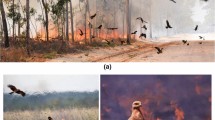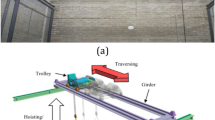Abstract
Using the robust design of a vehicle vibration model considering uncertainties can elaborately show the effects of those unsure values on the performance of such a model.
In this paper, probabilistic metrics, instead of deterministic metrics, are used for a robust Pareto multi-objective optimum design of five-degree of freedom vehicle vibration model having parameters with probabilistic uncertainties. In order to achieve an optimum robust design against probabilistic uncertainties existing in reality, a multi-objective uniform-diversity genetic algorithm (MUGA) in conjunction with Monte Carlo simulation is used for Pareto optimum robust design of a vehicle vibration model with ten conflicting objective functions. The robustness of the design obtained using such a probabilistic approach is shown and compared with that of the design obtained using deterministic approach.






















Similar content being viewed by others
References
Goodall, R.M., Kortüm, W.: Active control in ground transportation—a review of the state-of-the-art and future potential. Veh. Syst. Dyn. 12, 225–257 (1983)
Hac, A., Youn, I.: Optimal semi-active suspension with preview based on a quarter car model. J. Vib. Acoust. 114, 84–92 (1992)
Karnopp, D.: Analytical results for optimum actively damped suspensions under random excitation. J. Vib. Acoust. Stress Reliab. Des. 111(3), 278–283 (1989)
Chalasani, R.M.: Ride performance potential of active suspension systems part 1: simplified analysis based on a quarter-car model. In: Symposium on Simulation and Control of Ground Vehicles and Transportation Systems AMD-80 (DSC.2), pp. 187–204 (1986)
Priyandoko, G., Mailah, M., Jamaluddin, H.: Vehicle active suspension system using skyhook adaptive neuro active force control. Mech. Syst. Signal Process. 23(3), 855–868 (2009)
Hrovat, D.: Optimal active suspensions for 3D vehicle models. In: Proc. of the American Control Conference, Arizona, USA, vol. 2, pp. 1534–1541 (1991)
Wang, J., Wilson, D.A., Xu, W., Crolla, D.A.: Active suspension control to improve vehicle ride and steady-state handling. In: Proceedings of the 44th IEEE Conference on Decision and Control, Seville, Spain, 12–15 December 2005
Yi, K., Hedrick, J.K.: The use of semi-active suspensions to reduce pavement damage. In: Henry, J.J., Wamblod, J.C. (eds.) Vehicle, Tire, Pavement Interface, ASTM STP 1164, pp. 1–13. American Society for Testing and Materials, Philadelphia (1992)
Thompson, A.G.: The effect of tire damping on the performance of vibration absorbers in an active suspension. J. Sound Vib. 133(3), 457–465 (1989)
Redfield, R.C.: Performance of low-bandwidth, semi-active damping concept for suspension control. Veh. Syst. Dyn. 20, 245–267 (1991)
Feng, J.Z., Li, J., Yu, F.: GA-based PID and fuzzy logic control for active vehicle suspension system. International. J. Autom. Technol., 181–191 (2003)
Alkhatib, R., Nakhaie Jazar, G., Golnaraghi, M.F.: Optimal design of passive linear suspension using genetic algorithms. J. Sound Vib. 275, 327–332 (2007)
Gundogdu, O.: Optimal seat and suspension design for a quarter car with driver model using genetic algorithms. Int. J. Ind. Ergon. 37(4), 327–332 (2007)
Bouazara, M.: Etude et analyse de la suspension active et semi-active des vehicules routters. PhD thesis, Universite Laval, Canada (1997)
Nariman-Zadeh, N., Salehpour, M., Jamali, A., Haghgoo, E.: Pareto optimization of a five-degree of freedom vehicle vibration model using a multi-objective uniform-diversity genetic algorithm (MUGA). Eng. Appl. Artif. Intell. 23(4), 543–551 (2010)
Papadrakakis, M., Lagaros, N.D., Plevris, V.: Design optimization of steel structures considering uncertainties. Eng. Struct. 27, 1408–1418 (2005)
Wang, J., Wilson, D.A.: Mixed GL2/H2/GH2 control with pole placement and its application to vehicle suspension systems. Int. J. Control 74(13), 1353–1369 (2001)
Crespo, L.G., Kenny, S.P.: Robust control deign for systems with probabilistic uncertainty. NASA report, TP-2005-213531, March (2005)
Wang, Q., Stengel, R.F.: Searching for robust minimal-order compensators. J. Dyn. Syst. Meas. Control 123, 223–236 (2001)
Jamali, A., Nariman-Zadeh, N., Atashkari, K.: Multi-objective uniform diversity genetic algorithm (MUGA). In: Kosinski, W. (ed.) Advanced in Evolutionary Algorithms. IN-TECH, Vienna (2008)
Jamali, A., Hajiloo, A., Nariman-zadeh, N.: Reliability-based robust Pareto design of linear state feedback controllers using a multi-objective uniform-diversity genetic algorithm (MUGA). Expert Syst. Appl. 37(1), 401–413 (2010)
Lim, D., Ong, Y.S., Lee, B.S.: Inverse multi-objective robust evolutionary design optimization in the presence of uncertainty. In: GECCO’ 05, Washington, USA, pp. 55–62 (2005)
Papadrakakis, M., Lagaros, N.D., Plevris, V.: Structural optimization considering the probabilistic system response. Theor. Appl. Mech. 31(3–4), 361–393 (2004)
Kalos, M.H., Whitlock, P.A.: Monte Carlo Methods. Wiley, New York (1986)
Deb, K., Agrawal, S., Pratap, A., Meyarivan, T.: A fast and elitist multi-objective genetic algorithm: NSGA-II. IEEE Trans. Evol. Comput. 6(2), 182–197 (2002)
Coello Coello, C.A., Becerra, R.L.: Evolutionary multiobjective optimization using a cultural algorithm. In: IEEE Swarm Intelligence Symposium, IEEE Service Center, Piscataway, NJ, pp. 6–13 (2003)
Goldberg, D.E.: Genetic Algorithms in Search, Optimization, and Machine Learning. Addison-Wesley, Reading (1989)
Author information
Authors and Affiliations
Corresponding author
Rights and permissions
About this article
Cite this article
Jamali, A., Salehpour, M. & Nariman-zadeh, N. Robust Pareto active suspension design for vehicle vibration model with probabilistic uncertain parameters. Multibody Syst Dyn 30, 265–285 (2013). https://doi.org/10.1007/s11044-012-9337-4
Received:
Accepted:
Published:
Issue Date:
DOI: https://doi.org/10.1007/s11044-012-9337-4




